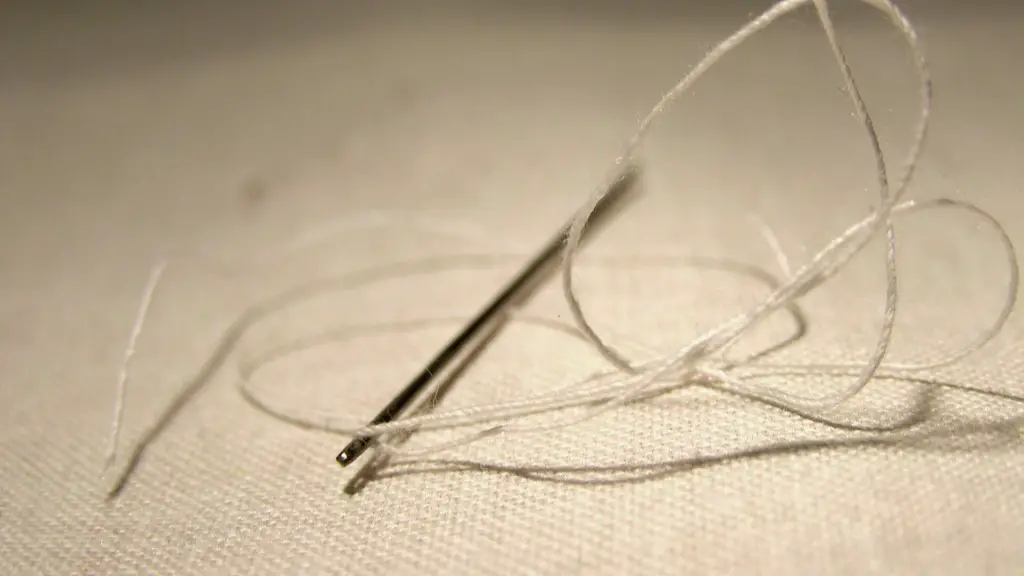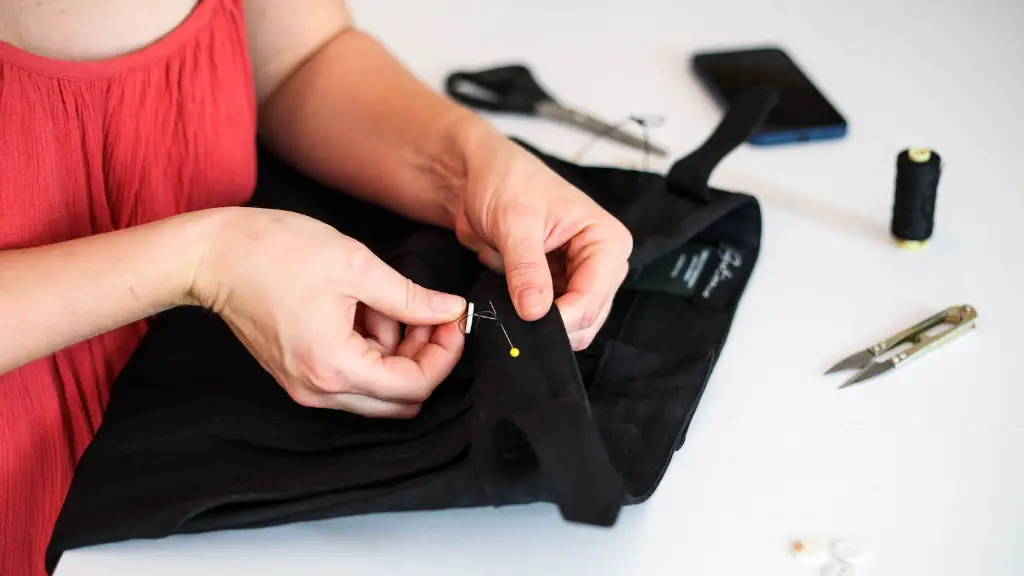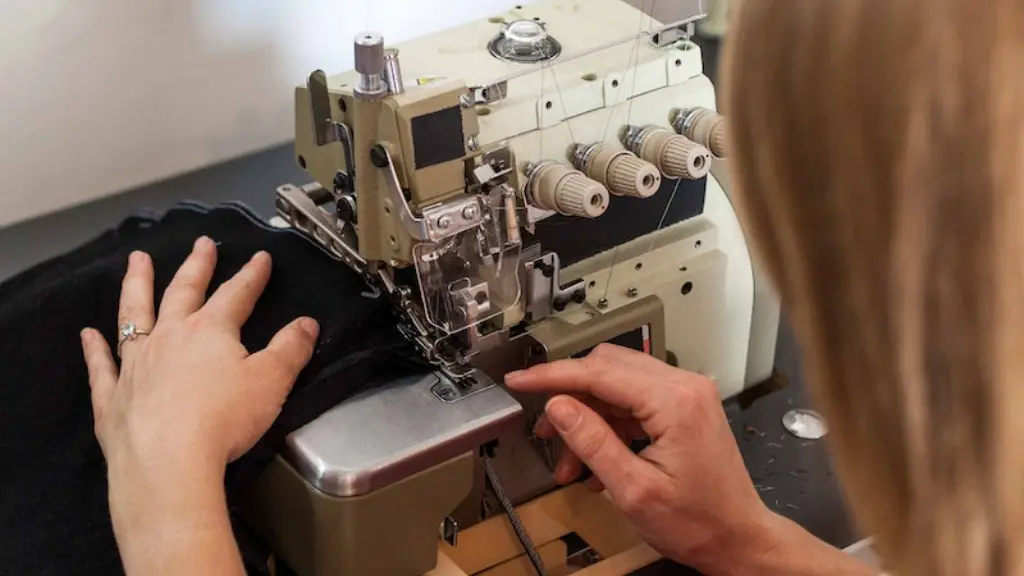Embroidery on Brother Sewing Machine
Embroidery is an art form that utilizes the beauty of threads and fabrics, to produce stunning designs and patterns. Craftsmen often utilize modern techniques to take the craft of embroidery to a new and exciting level. Recently, embroidering machines have become a popular means for precise and detailed work. Brother sewing machines are specifically equipped with features to make the process of embroidering a piece of fabric or garment easy and efficient.
Before beginning the embroidery process, the fabric or material should be evenly hooped onto the machine. Brother sewing machines feature various hoop sizes, allowing different sized pieces of cloth to be threaded. It is important to select the correct hoop size for the fabric, in order to produce even and tight stitches. The fabric should also be measured properly and marked to ensure that the design will fit properly before beginning the embroidery process.
Once the fabric is hooped and ready to be machined, the destination should be uploaded onto the machine. Brother sewing machines allow the user to scan multiple embroidery designs directly from their computer. Digital patterns and pictures can also be imported into the machine via USB. This feature allows the user to create their own custom designs and then upload them directly onto the machine. Finally, Brother sewing machines boast an array of built-in embroidery designs for users to choose from, allowing for versatile and stylish artwork.
Once a design has been chosen, it is important to adjust the settings and features of the Brother sewing machines to suit the specific fabric being machined. Wider stitches and thicker threads may be more suitable for heaving materials, whereas more delicate fabrics require more delicate stitches and thinner threads. Once the settings have been adjusted, the user can begin the embroidery process.
Brother Sewing machines feature a large LCD backlit display, allowing users to view the progress of their project. This feature also provides accurate sewing speed control, as well as directional control over the stitching. Additionally, the machine provides the user with detailed information regarding the current embroidery project. This information can be used to monitor and adjust the settings and features as the project is completed.
Brother sewing machines make the embroidery process enjoyable and efficient. Their machines feature versatile and adjustable settings, allowing the user to create stunning artwork that can be enjoyed for years to come. For those with a creative eye and patience to learn, embroidery is a great hobby to explore.
Threads
When it comes to embroidery on Brother sewing machines, choosing the right threads is essential. The machine offers various threading options, from lightweight polyester thread to more heavy-duty, special blend threads. Choosing the right type of thread depends on the fabric being embroidered. For heavyweight materials, heavier thread may be the best choice, whereas lightweight fabrics may call for a more delicate polyester thread.
In addition to selecting the right thread for the project, it is also important to consider the threads’ colour. Brothe sewing machines feature a range of vibrant colours, making it possible to create intricate and detailed embroidery designs. The machine also offers a variety of metallic threads, providing a unique and shiny effect to the final project.
It is also important to consider the type of fabric that the thread is being used on. Some fabrics, such as satin and silk, are much more delicate than other fabrics. It is recommended to use finer threads and lighter stitching when working with delicate fabrics, as these may pull or tear easily. Brother sewing machines come with a variety of threads and they are tailor-made to meet the needs of each project.
Needles and Hooping
As with thread, selecting the right type of needle for the project is essential for successful embroidery. Brother sewing machines feature a range of needles to suit a variety of materials. Universal needles tend to be the most suitable for embroidery, as they can work with a variety of fabrics. However, embroidery needles are often recommended for particularly heavy materials. The needle type can be adjusted on the machine before beginning the embroidery process.
Likewise, it is important to make sure that the fabric is properly hooped before beginning the embroidery process. Brother sewing machines are designed to fit different sizes of hoops. Hooping the fabric evenly helps to ensure that the embroidered design is even, and also helps to prevent the fabric from stretching. The hoop is also important as it helps to hold the fabric in place, allowing for a smoother and more precise stitching process.
It is also worth noting that certain fabrics such as satin, velvet, and leather call for specialty hoop materials, such as embroidery mats. Specialty hoops help to hold the fabric in place more securely, ensuring that the finished piece looks professional. Brother sewing machines offer a range of hoops to ensure smooth and perfect embroidering, regardless of the fabric.
Stabilizers
Stabilizers are commonly used in the embroidery process, as they help to keep the fabric taut and allows for consistent stitches. Brother sewing machines come with a variety of stabilizers, including water-soluble, self-adhesive, and heat-away stabilizers. Water-soluble stabilizers are often used for lightweight fabrics, while heat-away stabilizers are better suited for heavier fabrics such as canvas and denim.
The choice of stabilizer depends on the type of fabric being embroidered and the complexity of the stitch pattern. Some stabilizers may be difficult to remove, and so using a test piece before beginning a large-scale project is often recommended. Brother sewing machines feature a range of stabilizers that are designed to make the embroidery process easy and efficient.
Cleaning and Maintenance
Cleaning and maintenance of the Brother sewing machine are essential for successful embroidery. It is important to clean the machine after each use to prevent the build-up of thread or fabric fibres, as this could cause clogs and damage the machine. The machine should be oiled once every week to ensure smooth operation. Oiling the machine also helps to extend its working life and ensure that it remains in good condition.
It is also important to check the needles and threads regularly. Bent, dull, or chipped needles should be replaced immediately, as these can cause damage to the fabric and the machine. Threads should also be checked for breaks or knots, and should be replaced as needed. Additionally, ensuring that the machine is properly maintained and lubricated can help to prevent issues such as thread breaks or jamming.
Troubleshooting
When using a Brother sewing machine for embroidery, it is essential to be able to troubleshoot any issues that may arise. One of the most common issues is thread breaks, which can be caused by several factors. Thread breaks may be due to a dull needle, improper threading, or tension issues. If this occurs, it is important to check all of the factors mentioned above and make any necessary adjustments.
Another common issue is fabric puckering or bubbling. This can be caused by incorrect hooping, too much tension, or incorrect needle size. It is important to recheck the hooping and thread tension, and if necessary, switch to a different type of needle. This will help to ensure smooth and even embroidery.
Finally, Brother sewing machines may also display error messages. These messages indicate issues with the machine and can range from minor to major. It is important to be familiar with the various messages displayed on the machine and take the necessary steps to address any issues that occur. Consulting a professional may be necessary if the issue cannot be resolved on its own.




